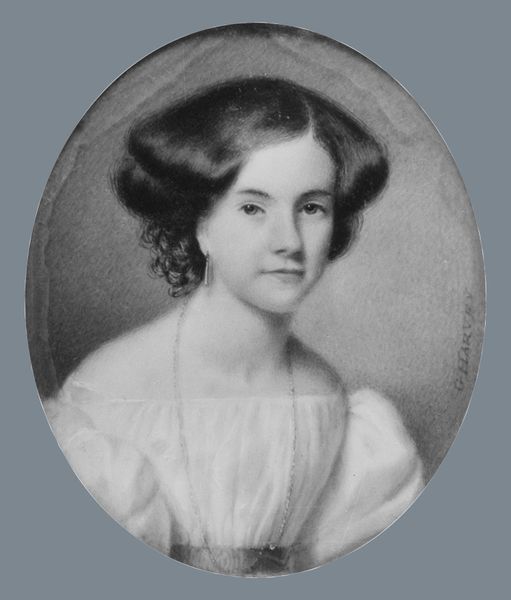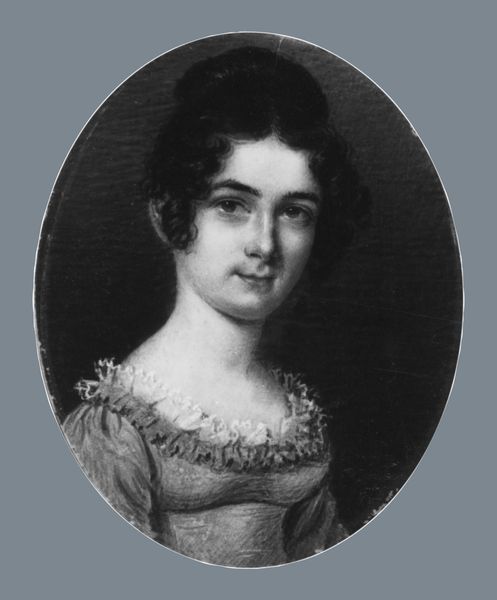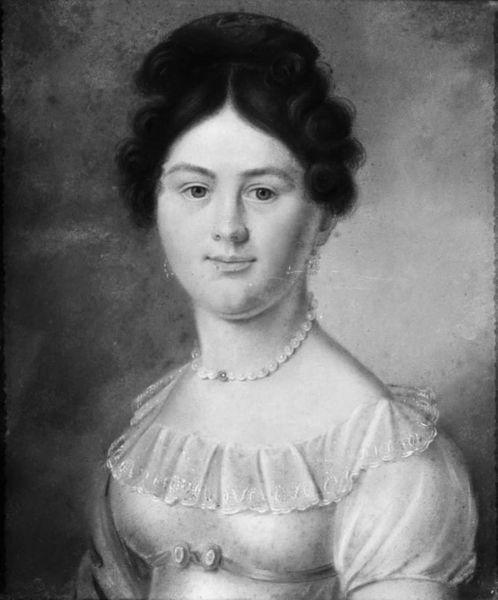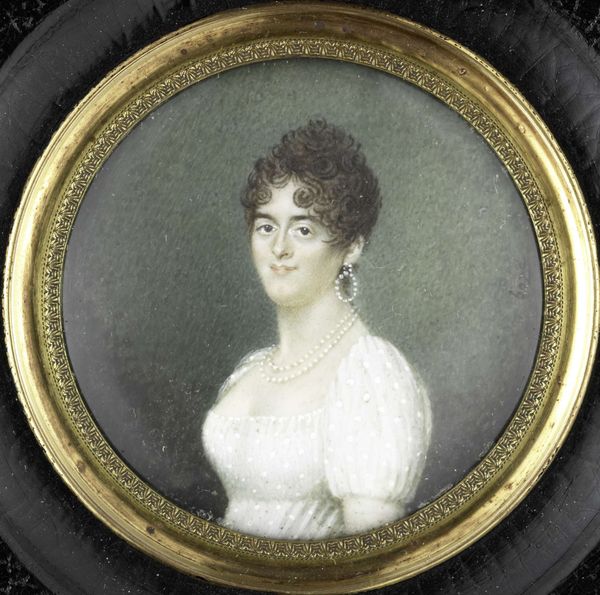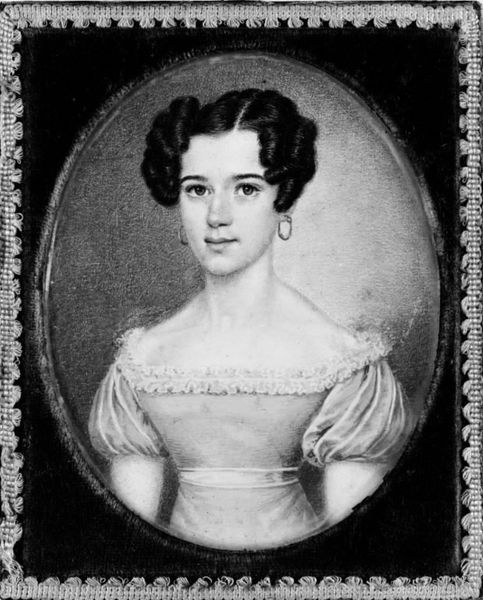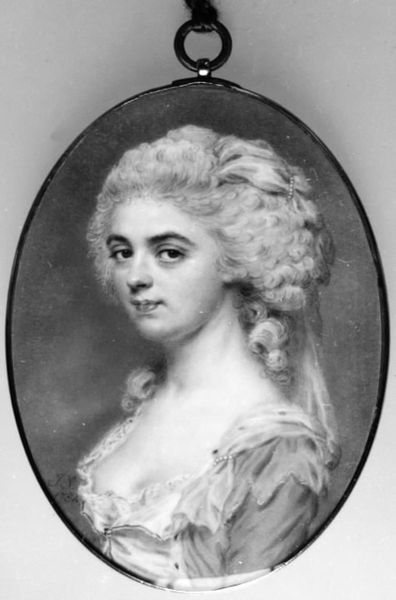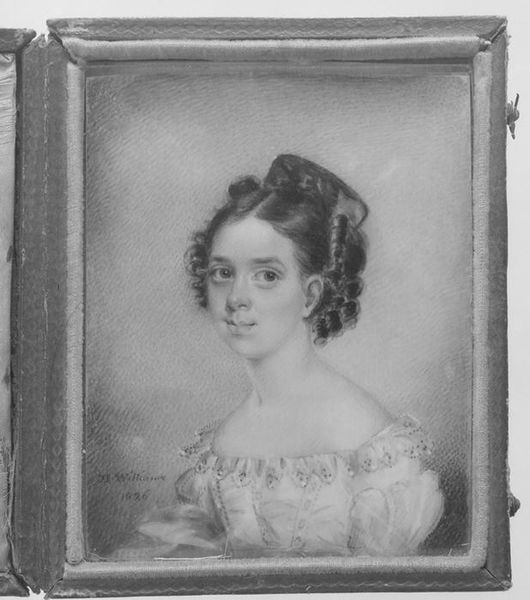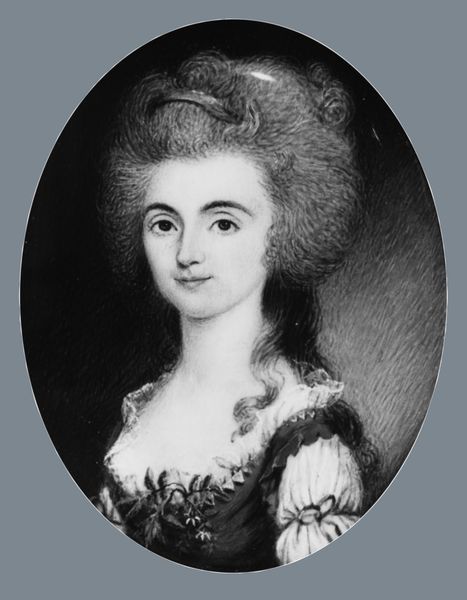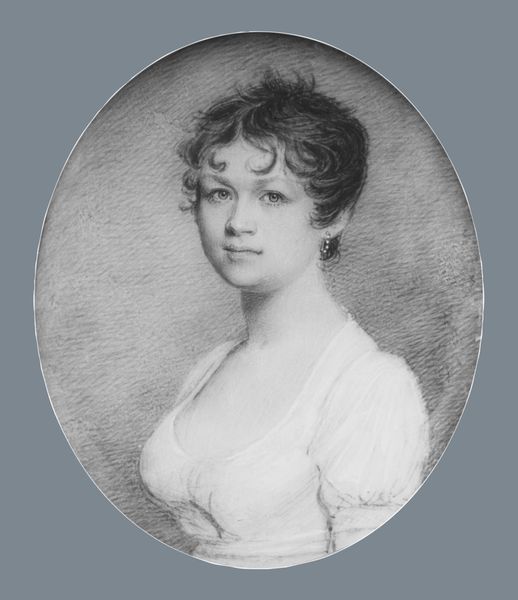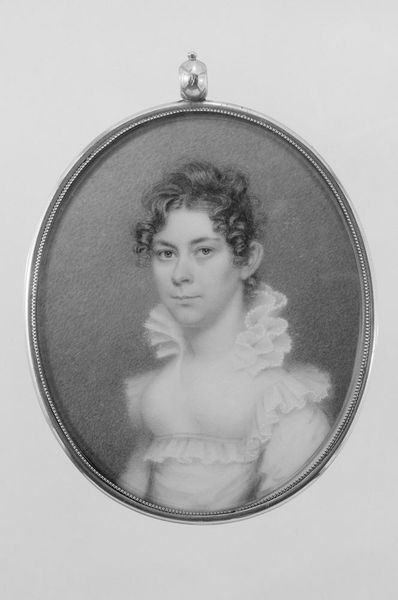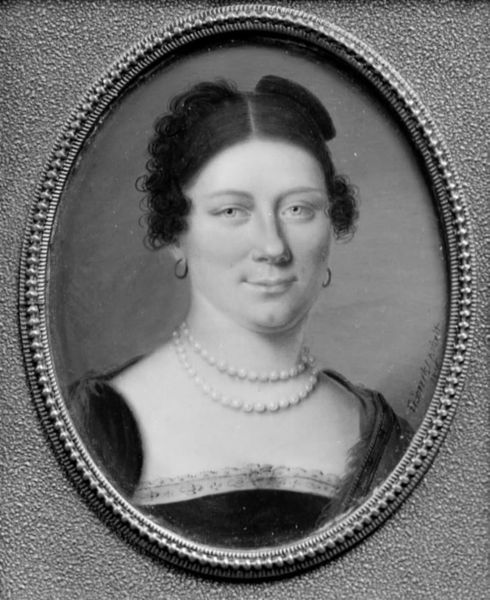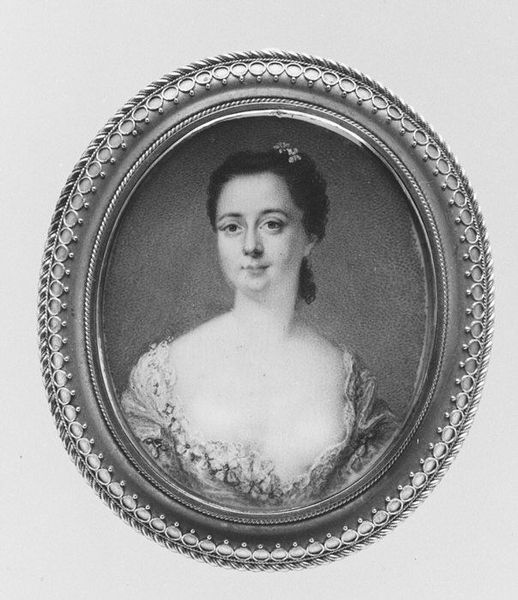
drawing
#
portrait
#
drawing
#
portrait
#
romanticism
#
academic-art
#
portrait art
#
miniature
Dimensions: 3 13/16 x 3 1/8 in. (9.7 x 7.9 cm)
Copyright: Public Domain
Curator: Look at this incredible miniature portrait of Mrs. Jean Pierre Barre, created by Charles Fraser sometime between 1817 and 1820. It’s currently housed here at the Metropolitan Museum of Art. Editor: Immediately, the image conveys a sense of quiet domesticity. The limited palette softens her features and, paired with her direct gaze, evokes a very personal encounter. Curator: Absolutely. Portrait miniatures like this were powerful statements, often commissioned within family or social circles to solidify social standing and remember loved ones. Think of them as early photographic keepsakes circulated amongst the elite. Editor: It speaks to the performance of femininity in the early 19th century. Notice the details of her clothing: the delicate lace at the neckline and cinched waist allude to an aesthetic ideal but perhaps also a more restrictive social role for women at the time. Her gaze hints at both strength and constraint, inviting questions about female agency during that period. Curator: Indeed, Fraser was a well-known portraitist of his day. His skill in rendering likenesses and the fashions of the time made him highly sought after, providing glimpses into the social circles and family connections that shaped early American society. But, it wasn't only Fraser. Who could afford to have these types of keepsakes made and passed on? Editor: It's also fascinating to consider these miniatures within the history of artistic patronage. Commissioning artworks became a tangible way to exhibit and secure one's wealth and cultural status. Curator: The drawing itself is remarkably detailed. One can almost feel the texture of the fabrics, despite the seemingly small scale. That kind of intimacy invites the viewer to really contemplate Mrs. Barre as an individual and her role in society. Editor: It prompts one to wonder about the story behind the subject; a story perhaps only partially told by societal expectations encoded in its imagery. That intimate scale, like you said, invites close reading, practically demanding intersectional analysis, drawing upon considerations of class, gender, and identity of Mrs. Barre herself. Curator: Well said. By exploring how portraits like this both reflect and reinforce societal values, we can develop a deeper appreciation for their cultural weight and the politics of image-making that defined those years. Editor: Ultimately, this miniature offers not just a glimpse into the past but, as we look to our contemporary setting, challenges us to consider how image, identity, and social narrative continues to play out today.
Comments
No comments
Be the first to comment and join the conversation on the ultimate creative platform.
